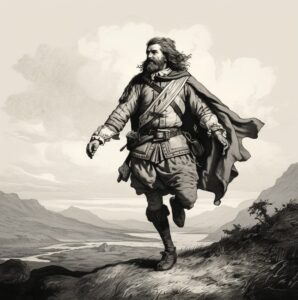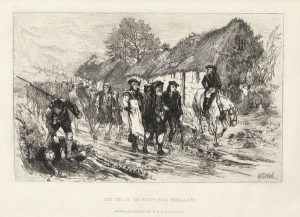Few figures loom as large as the Earl of Huntly. His influence and power in the North of Scotland were such that he was often referred to as “the goodman of the North,” a title that underscored his near-sovereign authority in the region. The Earl of Huntly’s story is one of political cunning, territorial dominion, and a masterful balancing act in the shifting sands of Scottish feudal politics.
The influence of the Gordon’s on Clan Cameron is well documented, with many records relating to the Camerons of Lochaber held in the private records of the Lordship of Lochaber in the Gordon papers in the National Records of Scotland, Edinburgh.
Lochiel was forced to acknowledge Lord Gordon’s rights of superiority of Cameron lands with the shifting allegiances of the times and the continued feud with the MacIntoshes.
The Rise of the Gordon Clan
The power of the Earl of Huntly was intrinsically linked to the ascendancy of the Gordon clan. The Gordons, originally from the Borders, had risen to prominence in the Northeast of Scotland, acquiring vast lands and influence. By the 16th century, the Earl of Huntly, as chief of the Gordon clan, had become the most opulent peer in Scotland, with his stronghold at Strathbogie, known for its palatial grandeur.
A Master of the Political Game
Huntly’s political acumen was evident in his ability to navigate the complex and often dangerous waters of Scottish feudal politics. He was a man of vast experience, not only in matters of state but also in international diplomacy, having been a prisoner at Pinkie Cleugh and later escaping from an English jailor in a daring and cleverly executed plan.
The Northern Stronghold
Huntly’s dominion in the North was not just a matter of land and titles. He wielded a kind of authority and influence that was almost royal in its scope. His alliances with other powerful Northern nobles such as the Earls of Erroll, Sutherland, and Lovat further solidified his position. His statement that he could restore the mass in three counties was not an idle boast but a testament to his sway over the region.
A Controversial Figure
Despite his power and influence, Huntly was a controversial figure. His loyalty was often questioned, and his political maneuvers were viewed with suspicion. He was accused of being duplicitous, playing both sides to maintain his power and position. This distrust stemmed from his ability to keep his options open, aligning himself with whichever faction seemed most advantageous at the time.
The Earl’s Legacy
The Earl of Huntly’s legacy in Scottish history is a complex one. He was a feudal lord of immense power, a political strategist of the first order, and a figure who managed to maintain his position in a time of great turmoil and change. His story reflects the broader narrative of Scotland in the late medieval period – a story of shifting alliances, political intrigue, and the relentless pursuit of power and influence.
In conclusion, the Earl of Huntly remains a fascinating character in Scottish history. His life and times offer a window into the feudal system of Scotland, where power was often balanced on the edge of a sword, and allegiances were as changeable as the northern winds. His dominion over the North left an indelible mark on the history of Scotland, a testament to the era of the feudal barons and their lasting impact on the nation’s historical landscape.
Adapted from: Skelton, J. (1887). Maitland of Lethington and the Scotland of Mary Stuart: A history (Vol. 1). William Blackwood and Sons.



